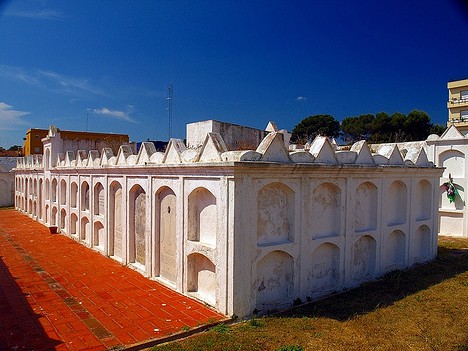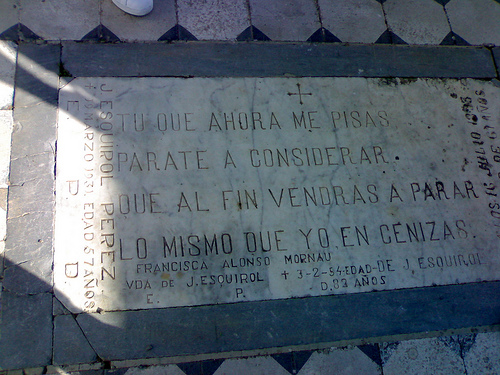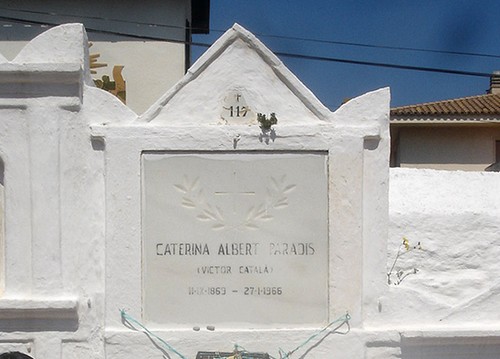Today we visited a very special place. We are in the marine cemetery of l’Escala, unique in its category in the Costa Brava. Located in the heart of the village, and a few meters from the sea (on Garbí street, 15), it remains intact between the buildings that surround this jewel of neoclassic art that is the burial place of some important people from l’Escala.

Marine cemetery in l'Escala, Girona, Costa Brava, Spain
L’Escala is a well-known village on the Costa Brava known for its production of good quality anchovies. In 1835 this cemetery was founded to be the burial place of the villagers. From 1970 burials were stopped because of the ban of doing it in urban centers.

L'Escala cemetery niches shine with a dazzling white colour under the sun
However, from that time the life of this neoclassical jewel did just begin as a monument, because, also to prevent it from real estate speculation, the neighborhood movement succeeded in pressuring the authorities to be declared historic-artistic monument, as it was done in 1974.
The cemetery is composed of an atrium at the entrance, a majority of niche area topped with lime coated tympani, which gives them a dazzling white color, typical of many Mediterranean landscapes and, in addition, 4 pantheons. The chapel belongs to the Maranges family pantheon.

Photographer Josep Esquirol headstone, in l'Escala cemetery
The marine cemetery of L’Escala hosts the remains of two great catalan. The first is Caterina Albert, born in this village and who, under the male pseudonym Victor Català, wrote great works of XIXth century Catalan literature, the most important of which was Solitude. We also found Josep Esquirol tomb, the l’Escala photographer who took the first pictures from the archaeological site of Empúries, and whose photographic collection is preserved in the villa.

Caterina Albert tomb (writer known as Victor Català)







